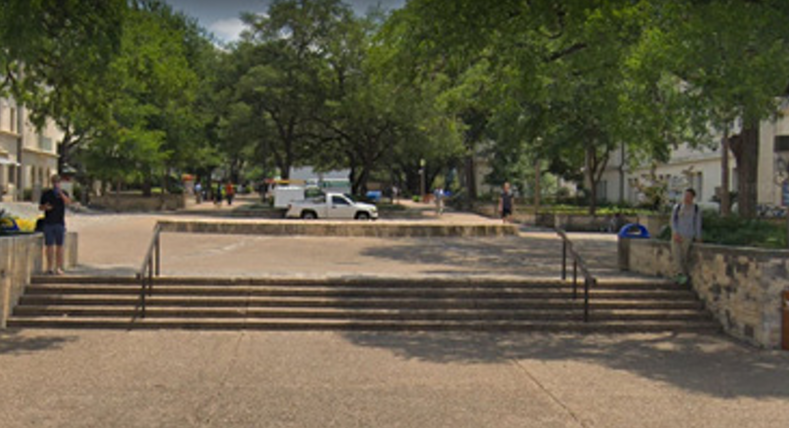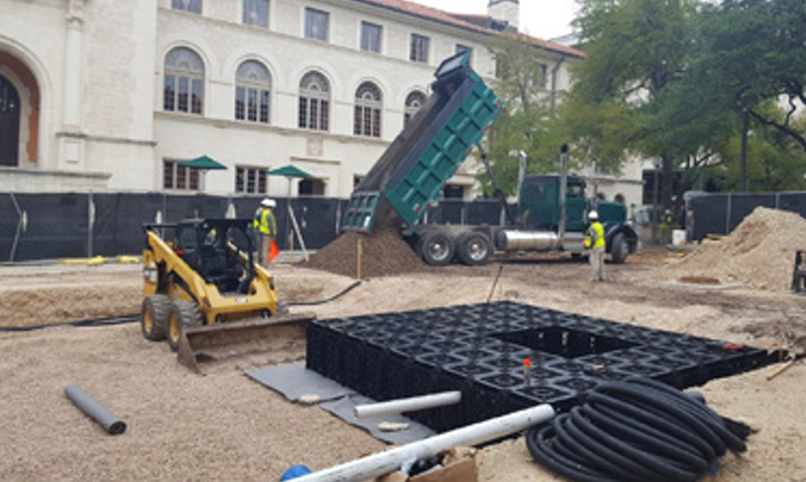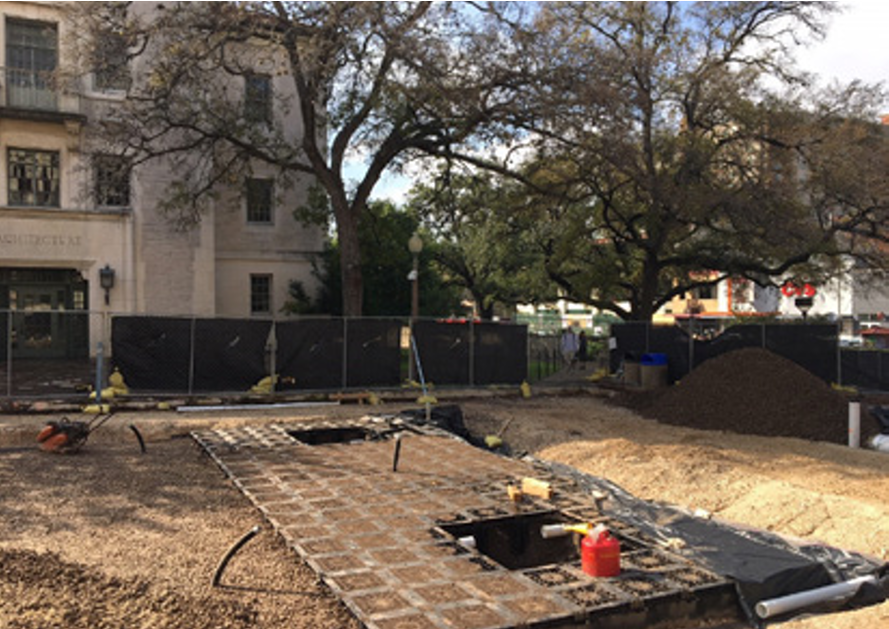Written by: James Carse, Manager, Landscape Services at The University of Texas at Austin
One of the great things about working on a college campus is seeing students involved in various initiatives – some of which come to fruition and even influence my job as Landscape Services manager at University of Texas at Austin (UT Austin).

In early 2017, several members of student government approached campus planning staff about redesigning an old fountain on campus and the plaza area surrounding it. The fountain was in disrepair and had not operated in many years, and the students were interested in creating an iconic element that could welcome students and visitors to the west side of campus.
After several meetings with campus leadership (including Landscape Services) and much brainstorming, the students and the group agreed on a basic design and some goals for the project. The focus would be on increasing usable space in the area, adding cover by planting shade trees, and designing and installing a major university entrance sign.

In early 2018, the project received funding and was handed over to staff of UT Austin Campus Construction to be implemented, with support and direction from Landscape Services. For approximately five months, campus staff worked with a local landscape architect firm to develop and design the plaza. The project selected a general contractor and construction started in July 2018.
For me, what makes this project special is that our group was able to recommend, and received funding for, a sustainable tree planting solution on campus. By providing research about the products and describing their proper use, we justified the expenditure of the money to the university. Not only was this project changing a major entry point to campus, but it was also investing in the long term success of the new trees, which add both monetary and ecological value to our campus.

By using a mixture of load-bearing soil cells around the four trees and structural soils under the rest of the pavers, this project allows the trees to expand their roots into quality planting soil first, then into the coarse structural soil second. This method of planting urban trees in actual soil might seem obvious, but it rarely happens due to the need to maximize walkable space in plazas and along streets.
The basic idea of the soil cells is like that of a hollow Lego piece. The pieces can be stacked to achieve depth and can stretch as wide as needed to maximize soil volume and available rooting area. This flexibility allows pavement to be placed on top of these cells and uncompacted soil to be installed in the voids the cells produce. Utilities and irrigation can be easily incorporated and storm water storage is even possible, although not used on this project. Another positive aspect of the cells is that they are made with recycled materials.

The structural soil is a product consisting of a mixture of gravel (approximately one inch diameter), a quality soil, and an adhesive component that helps hold the soil against the stone. The main goal of structural soil is to create an environment that can be compacted but still allow for root growth. The large pore space produced from the gravel (even when compacted) allows for water and oxygen to enter, thus creating a place for roots to grow. This is not the case when planting in road base or similar compacted materials – tree roots cannot penetrate these materials and they don’t offer any organic matter for nutrition.

This project was the first use of the soil cells on the UT Austin campus and the third time using structural soils. We hope to learn from this project, monitor tree health over time, and potentially use this product again soon.
Further information and research on these types of products can be found on-line.
The University of Texas at Austin does not endorse any specific product.
For questions about the trees and landscape on this project please contact Jim Carse (jim.carse@austin.utexas.edu). Trees and pavers installed - photo by Jim Carse
